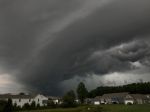Oakland is reeling after a gun rampage at a small religious college left seven people dead. Six months ago, eight people died in a shooting in Seal Beach, California. And just over a year ago, an attack targeting Rep. Gabrielle Giffords in Arizona left six dead and 13 injured.
Each mass killing provokes a flurry of public shock and a frenzy of media attention — and often soul-searching about whether they represent a broader descent into gun-fueled violence.
But are such attacks on the rise in the United States?
Not according to professor James Alan Fox, a criminologist at Northeastern University in Boston who has been studying mass murder for the past three decades.
Police search for gun used in Oakland college shooting
Despite the huge media coverage devoted to them, crime statistics show that there is no upward trend in mass killings — defined as having four victims or more, not counting terrorism — since the 1970s, he said.
Campus shootings, such as the Virginia Tech massacre in 2007, or the cluster of school shootings of the 1990s, including Columbine, often attract more attention than multiple killings in other settings.
At Virginia Tech, 23-year-old student Seung-Hui Cho took 32 lives in a solo shooting spree on the Blacksburg campus before killing himself.
In 1999 at Columbine High School in Littleton, Colorado, 18-year-old Eric Harris and 17-year-old Dylan Klebold killed 12 of their fellow students and a teacher before taking their own lives in the school library.
But despite these high-profile cases, the chances of falling victim to a school or campus shooting are still incredibly slim, Fox said.
“Overall in this country, there is an average of 10 to 20 murders across campuses in any given year,” he said. “Compare that to over 1,000 suicides and about 1,500 deaths from binge drinking and drug overdoses.”
Courtesy Of CNN.COM
















